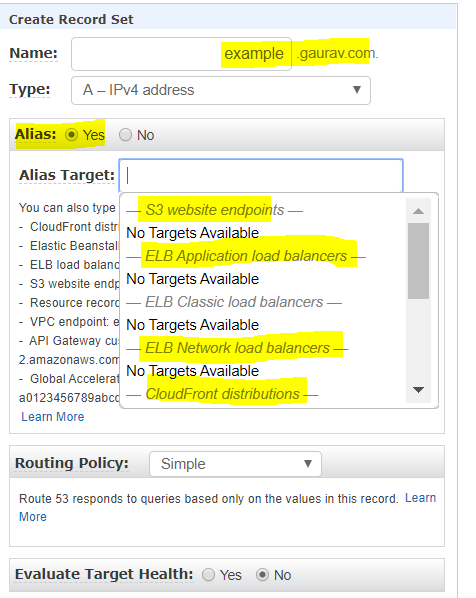AWS Route53 and Routing Policies
 Sahil Kamble
Sahil Kamble
What is AWS Route 53? 🤔
Imagine Route 53 as the GPS for the internet! It translates human-friendly domain names (like www.example.com) into machine-readable IP addresses that computers use to identify each other on the web. AWS Route 53 ensures your users can effortlessly navigate to your website without getting lost in the digital wilderness.
It helps with domain registration (like claiming your spot on the internet), manages where to send people when they visit your site, and even checks if everything is running smoothly. 🌐💻
How to Get Started 🚀
Sign in to AWS Console 🖥️: If you don't have an AWS account, create one. Once logged in, navigate to the Route 53 console.
Register a Domain 🌐: If you don't have a domain yet, Route 53 makes it easy to register one. Simply follow the steps to claim your digital territory.
Create DNS Records 📝: Tell Route 53 where to direct your domain by creating DNS records. You can point it to your website, a specific IP address, or other AWS resources.
Set Up Health Checks 🩺: For critical applications, configure health checks to ensure Route 53 redirects traffic to healthy resources.
Explore Traffic Policies 🚀: Take advantage of advanced features like weighted routing or latency-based routing to optimize your application's performance.
Key Features:
1- A Record ( URL to IPv4)
The “A” record stands for Address record. The A record is used by computer to translate the name of the domain to an IP address.
Eg: (http://medium.com/) might point to http://126.78.98.90/))/)
2- CNAME (Canonical Records- URL to URL)
CNAME Points a URL to any other URL. (gaurav.gupta.com/) => gkg.example.com/)), We use it only for Non-Root Domain(aka. something.mydomain.com/))

Resolving example.gaurav.com/) to newexample.gaurav.com/)
3- Alias Record:
Alias record points a URL to an AWS Resource, Alias record are used to map resource record sets in your hosted zone to Elastic Load Balancer, CloudFront or S3 Buckets websites.

Alias Record
4- AAAA: (URL to IPv6)
An AAAA record maps a domain name to the IP address (Version 6) of the computer hosting the domain. An AAAA record is used to find the IP address of a computer connected to the internet from a name.
5- MX Record (Main Exchange Record)
A mail Exchanger record (MX record) specifies the mail server responsible for accepting email messages on behalf of a domain name. It is a resource record in the Domain Name System (DNS). It is possible to configure several MX records, typically pointing to an array of mail servers for load balancing and redundancy.
Route53 Routing Policies
When you create a record, you choose a routing policy, which determines how Amazon Route 53 responds to queries:
Simple routing policy — Use for a single resource that performs a given function for your domain, for example, a web server that serves content for the example.com website.
Weighted routing policy — Use to route traffic to multiple resources in proportions that you specify.
Latency routing policy — Use when you have resources in multiple AWS Regions and you want to route traffic to the region that provides the best latency.
Failover routing policy — Use when you want to configure active-passive failover.
Geolocation routing policy — Use when you want to route traffic based on the location of your users.
Geoproximity routing policy — Use when you want to route traffic based on the location of your resources and, optionally, shift traffic from resources in one location to resources in another.
Multivalue answer routing policy — Use when you want Route 53 to respond to DNS queries with up to eight healthy records selected at random.
Subscribe to my newsletter
Read articles from Sahil Kamble directly inside your inbox. Subscribe to the newsletter, and don't miss out.
Written by
